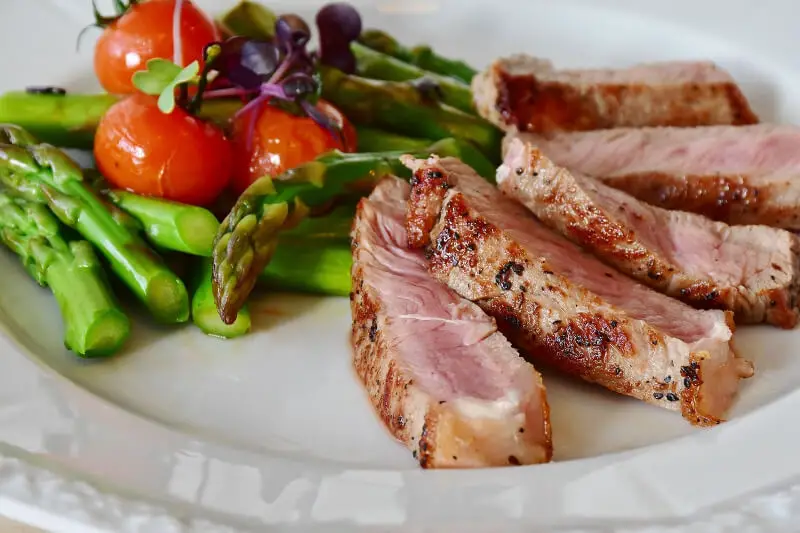Toning your abs can be one of the most frustrating and time-consuming goals imaginable. There has to be a focus on nutrition, fitness, sleep, and countless other factors all at once in order to achieve the results we want. It can seem impossible to accomplish it all around our busy schedules or physically demanding jobs.
If only we could hire a sculptor to carve away unwanted layers of belly fat and reveal a six-pack reminiscent of Hercules, himself. If you want to take your stomach from dad-bod to Greek God, you’ll have to trade in the chisel for a fork and knife.
You’ve heard the saying “Abs are made in the kitchen,” and it’s true because, no matter what else you do, your abs are not going to show if your nutrition isn’t on point. You can hit the gym hard every day after work and get eight hours of sleep every night, but it will all be worthless if you aren’t properly fueling your body.
When it comes to nutrition, the information can be a lot to digest both literally and figuratively. As with understanding any goal, it’s best to begin basic. Let’s take a look at the three top considerations.
Table of Contents
What Do I Eat?
As a personal trainer, I am frequently asked by my clients and other gym members, what I eat. I don’t really care to provide a specific answer to this question, because what my body needs might be vastly different from the individual asking the question. There are principles, however, that apply to everyone.
First and foremost, keeping junk food to a minimum is the most obvious key to getting your abs to show. Pizza is fine for the occasional cheat meal, but consistently eating those types of foods will make you sluggish, which decreases your performance in the gym, and also shows up negatively on your waistline.
For men and women to have definition in their abs, their body fat needs to be around 10 and 15 percent, respectively. This number might fluctuate a bit higher or lower for some individuals, but this is a good general guideline.
In order to lower our body fat percentage, we need to decrease the fat stores in our bodies. Working out is a big part of this, as the body will dip into fat stores to create energy, but we also need to make sure we are not replacing this supply of fat to a higher level than what we need.
Fat is a vital nutrient and is important to keep in our diet, just like protein and carbohydrates. To lower your body fat, however, you will need to focus on consuming fewer calories from fat, and more from carbs and protein. It is important to note that your calories from fat should not be eliminated, but reduced.

How Much Do I Eat?
This question is also one that can be dictated by a number of different factors such as height, weight, age, gender, and activity level. Each body is different and so are the requirements for how many calories, and from which sources, we should eat.
In general, the more active you are the more calories you need to consume to create energy for your body. So many times, people look at this as a reward that allows them to eat more, but eating the wrong kinds of foods will slow down your progress.
Instead, look at your workouts as an opportunity to change your body by eating the right foods in the correct amounts. Even foods that are deemed healthy can slow down your progress if you eat them in the incorrect amounts. Which leads us back to the question, “How much do I eat?”
Macronutrient (fat, carbs, protein) proportion recommendations can be broad, but normally fall into this range:
- Carbs: 45-65% of total calories
- Fat: 20-35% of total calories
- Protein: 10-35% of total calories
Again, individual factors will determine how you fall into this range. The first step to determining what proportions you need is to figure out how many calories you need to consume in total. There are many calculators available online, which will give you a fairly accurate number. If you want a more specific answer, consult a dietician.
Total calorie consumption is the most vital aspect of losing body fat, but having the right proportions of calories for your body can speed up the process. Many times, staying on the lower end of calories from fat and the higher end of calories from protein will put you on a faster track to lower your body fat percentage.

Meal Prep
You’ve figured out what to eat and how much of it, now comes the hard part: implementing this information into your nutrition plan.
Most eating plans fail because of poor preparation. You don’t have the ingredients you need for a meal, you’ve had a long day and don’t feel like chopping all your veggies and protein, or you give in to a craving because you don’t have a better option readily available. Whatever issue arises can be overcome by planning ahead.
For those with a Monday-Friday job, the weekends are an ideal time for meal prep. Before you even leave your house, sit down with a pen and paper, think about your schedule for the week, and plan out the snack and meal requirements you’ll need throughout the week.
This sit-down time allows you to consider your caloric and macronutrient needs in advance, rather than blindly walking into a store and making a semi-educated guess as to whether a certain food or meal fits your plan. Instead, confidently enter the store with your list, stick to it, and you’ll have taken the first step toward a successful eating week.
There’s no getting around the fact that preparing food in advance takes work and commitment. So, when Sunday afternoon rolls around and you’re standing in the kitchen looking at a counter filled with groceries, think about how much your work now will help later in the week.
Preparing your food in advance is a small choice that yields big results. It might help you opt for homemade chicken and veggie bake for lunch rather than going out for a burger. It might allow you to pick a perfectly portioned servings of veggies and hummus, rather than chips and dip. Having these options gives you a series of opportunities to make healthy choices.

Putting It All Together
As we stated, toning your abs takes several different factors into account. When the nutrition portion is correct, however, the other aspects fall into place. Your workouts will become more effective with the proper fuel, and your body will function at a healthier level which can help you sleep better.
When all these factors are working together, your body will start to change in the way you want. It is not an overnight process, but stick to your nutrition plan and the results will come. Just remember, your abs will revealing themselves one healthy choice at a time.

Dan Chojnacki writes for EffortlessInsurance.com and has been a certified personal trainer (NETA) for nearly a decade. He currently trains in Green Bay, WI where he is also a group fitness director. In his free time, he enjoys running, swimming, playing tennis, and coaching youth softball.

